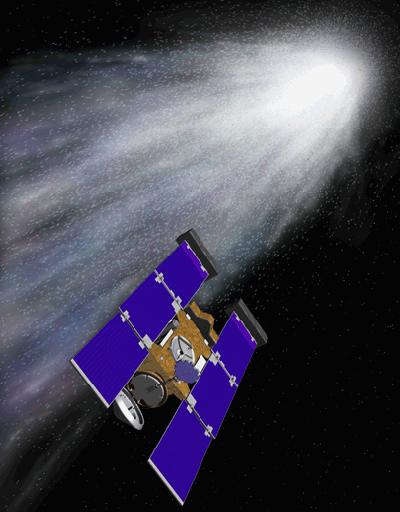Imagine yourself driving through a hailstorm on a fast-moving metropolitan expressway with hailstones bombarding your car.
This is similar to the scenario experienced by NASA’s Stardust spacecraft when it encountered Comet Wild (pronounced “Vilt”) 2 in January 2004. Having survived this meeting, and a 2.88 billion miles (4.63 billion kilometers) journey, the spacecraft will soon return to Earth.
With its tennis-racket-shape collector, the probe gathered less than an ounce (28 grams) of dust grains from the comet’s coma in January 2004. Aerogel, a thin substance attached to the collector, captured the particles as they sped by at 5 times the speed of a rifle bullet.
While the spacecraft collected the comet particles, it snapped images and made measurements of dust specimens. The pictures and data were transmitted to the Stardust team on Earth using a high-gain antenna.
Scientists believe the comet samples will reveal clues not only about comets but also the solar system’s origins.
“Comets are some of the most informative occupants of the solar system. The more we can learn from science exploration missions like Stardust, the more we can prepare for human exploration to the Moon, Mars, and beyond,” explains Mary Cleave, associate administrator for NASA’s Science Mission Directorate.
Discovered in 1978, Comet Wild 2 takes approximately 6.39 years to orbit the Sun, traveling as close to the Sun as Mars and as far away as Jupiter.










